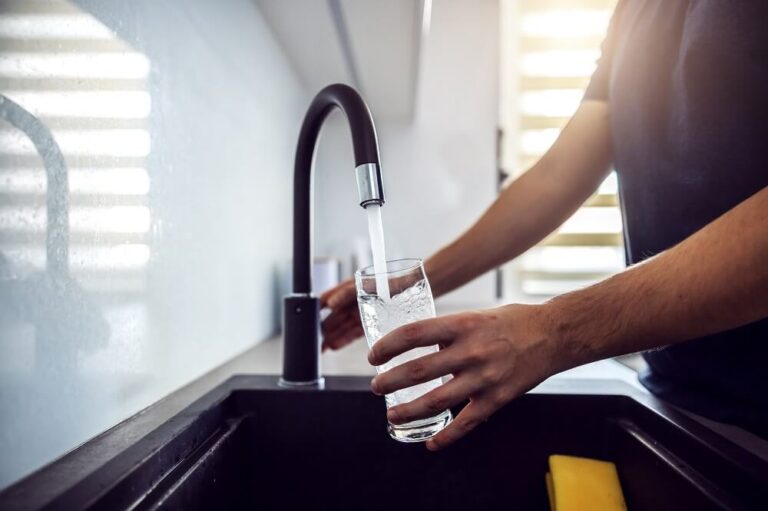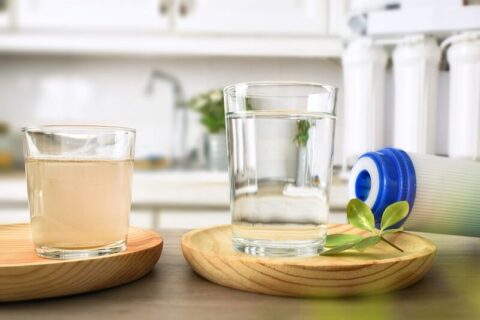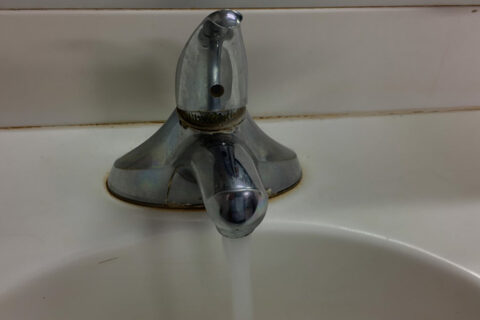Drinking Tap Water vs. Purified Water

Life in the desert can be harsh. With average summer highs exceeding 100 degrees F in Phoenix, Arizona, it’s vital to stay hydrated. Of course, this means you need uninterrupted access to clean, safe drinking water. For many people, the kitchen or bathroom faucet is their go-to source for a glass of water. But is it safe to drink from the tap, or should you purify your water first?
You may be surprised to learn that there’s a big difference between tap water and purified water, especially in the Phoenix area, where the water contamination level is quite high. Fortunately, there are several ways to treat your tap water if you decide its quality or taste isn’t good enough for your family.
How is Your Water Treated?
As water travels over the land and percolates through the soil, it dissolves naturally occurring minerals, picks up pollutants, and comes in contact with radioactive materials. This is why water treatment is necessary. Tap water is treated locally by various methods. In the City of Phoenix, for example, they use the following:
- Screening and presedimentation
- Coagulation, flocculation, and sedimentation
- Filtration
- Disinfection
So, is Your Water Safe to Drink?
The Environmental Protection Agency (EPA) regulates drinking water quality across the country. It has established several safety standards that potable water must meet to be deemed safe for public consumption. Most Phoenix-area cities meet these standards, but occasionally exceed the limits or come very close.
However, several contaminants may still be hiding in the water when you turn on the tap. Here are some measurements from the City of Phoenix’s 2020 Water Quality Report to keep in mind for health and safety reasons:
- Chlorite: The EPA recommends keeping chlorite levels below 0.8 parts per million (ppm). Sample results show that Phoenix’s water contained up to 0.6 ppm of chlorite in 2020.
- Trihalomethanes (THMs): The maximum allowed level of THMs is 80 ppm. Individual sample results of Phoenix drinking water in 2020 reached as high as 75 ppm.
- Arsenic: The maximum allowed level of arsenic is 10 parts per billion (ppb). In 2020, the City of Phoenix reported the highest running average of 7 ppb.
- Nitrate: The EPA recommends keeping nitrate levels below 10 ppm. While water quality test results show nitrate levels peaking at 4 ppm, nitrates in the soil can spike quickly and unpredictably due to fertilizer runoff, leaching from septic tanks, and erosion of natural deposits.
- Algae: The EPA doesn’t regulate this nontoxic pollutant, but it still affects your drinking water’s taste and odor. Algae bloom in the Salt River Project canals during the late summer and fall, acting as a major source of musty-smelling water in the Phoenix area.
- Total Dissolved Solids (TDS): The EPA recommends that TDS levels stay below 500 ppm, but this is a secondary, non-enforceable guideline. In 2020, the water in Phoenix measured TDS levels of 306 to 678 ppm. These levels are alarmingly high, considering that water is deemed unfit for human consumption when TDS levels exceed 1,000 ppm.
- Water hardness: Water is considered “moderately hard” when it contains 3.5 to 7 grains per gallon (gpg) of dissolved magnesium and calcium. Anything over 10.5 gpg is “very hard.” Phoenix’s drinking water measures 9.9 to 16.1 gpg. These numbers are off the charts, meaning Phoenix water is among the hardest in the country!
You can find your local water report online.
How to Treat Phoenix Area Tap Water
The type of water treatment system you need here in the valley depends on what contaminants you want to remove. Here are some of the most popular options:
- Reverse osmosis purification uses semi-permeable membranes to filter out sediment, chlorine, and dissolved solids. Kinetico Water’s K5 Drinking Water Station goes above and beyond traditional R/O by also removing 99.99% bacteria and viruses.
- Whole-house filtration uses carbon filters to remove unwanted chemicals, including chlorine. Similar to having a refrigerator or pitcher-style filter throughout the home.
- Water softening uses ion exchange to remove calcium, magnesium, and other minerals from the water to protect your plumbing, appliances, faucets, and fixtures.
Kinetico Water proudly offers a range of independently certified, made-in America solutions, including water softeners, dechlorinators, purifiers, and more. We’re here to help make your water as clean, safe, and delicious-tasting as possible. Contact us today at (480) 405-9623 for more information about choosing a water purification system for your home in Gilbert, Mesa, Scottsdale, and other Phoenix metro cities.


